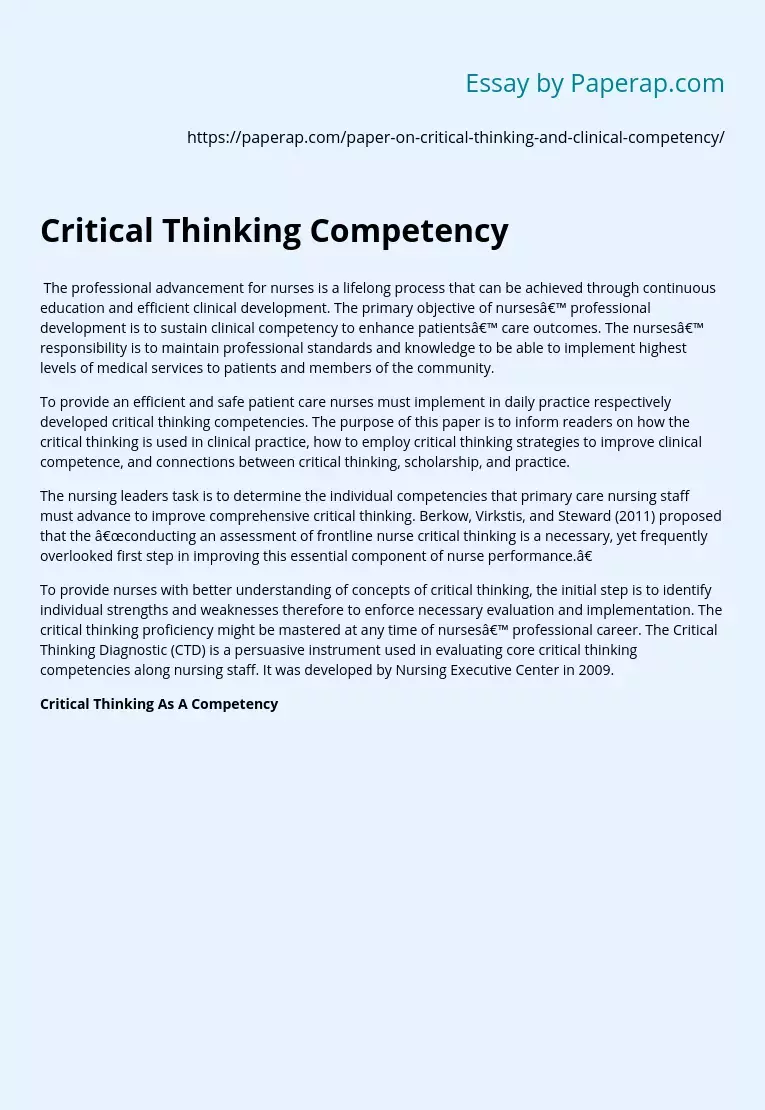Critical Thinking Competency
The professional advancement for nurses is a lifelong process that can be achieved through continuous education and efficient clinical development. The primary objective of nurses’ professional development is to sustain clinical competency to enhance patients’ care outcomes. The nurses’ responsibility is to maintain professional standards and knowledge to be able to implement highest levels of medical services to patients and members of the community.
To provide an efficient and safe patient care nurses must implement in daily practice respectively developed critical thinking competencies.
The purpose of this paper is to inform readers on how the critical thinking is used in clinical practice, how to employ critical thinking strategies to improve clinical competence, and connections between critical thinking, scholarship, and practice.
The nursing leaders task is to determine the individual competencies that primary care nursing staff must advance to improve comprehensive critical thinking. Berkow, Virkstis, and Steward (2011) proposed that the “conducting an assessment of frontline nurse critical thinking is a necessary, yet frequently overlooked first step in improving this essential component of nurse performance.
”
To provide nurses with better understanding of concepts of critical thinking, the initial step is to identify individual strengths and weaknesses therefore to enforce necessary evaluation and implementation. The critical thinking proficiency might be mastered at any time of nurses’ professional career. The Critical Thinking Diagnostic (CTD) is a persuasive instrument used in evaluating core critical thinking competencies along nursing staff. It was developed by Nursing Executive Center in 2009.
Critical Thinking As A Competency
Critical Thinking Competency. (2019, Dec 05). Retrieved from https://paperap.com/paper-on-critical-thinking-and-clinical-competency/
